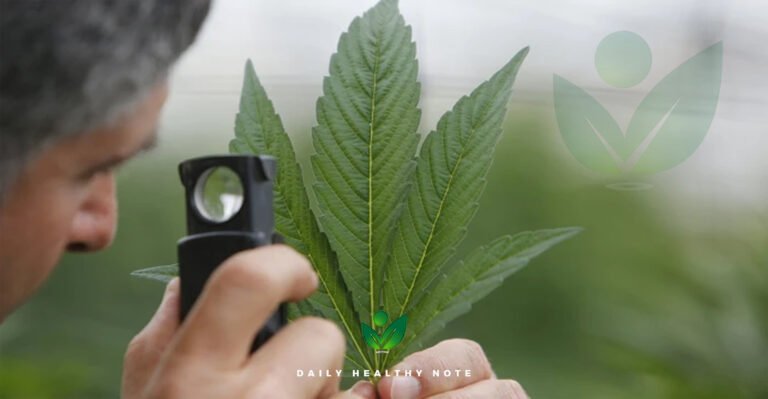Plastic pollution has reached alarming levels, wreaking havoc on ecosystems, wildlife, and human health worldwide. Traditional plastics, derived from fossil fuels, persist in the environment for hundreds of years, contaminating oceans, rivers, and landfills. However, amidst this crisis, there’s a promising solution emerging: hemp-based materials. Hemp, a versatile and sustainable crop, offers a natural response to plastic pollution, providing biodegradable alternatives that can revolutionize various industries while mitigating environmental harm.
The Environmental Impact of Plastic Pollution:
Plastic pollution poses a significant threat to the environment, marine life, and human health. Every year, millions of tons of plastic waste end up in oceans, where it accumulates in vast gyres, entangling marine animals and contaminating food chains. Microplastics, tiny fragments resulting from plastic degradation, pervade waterways, soil, and even the air, posing risks to wildlife and ecosystems. Additionally, plastic production and incineration contribute to greenhouse gas emissions, exacerbating climate change.
Hemp as a Sustainable Alternative:
Hemp, a variety of the Cannabis sativa plant, holds immense promise as a sustainable alternative to traditional plastics. Unlike fossil fuel-derived plastics, hemp-based materials are biodegradable, meaning they can break down naturally without harming the environment. Hemp cultivation requires minimal pesticides and fertilizers, making it a more eco-friendly option compared to crops like cotton. Moreover, hemp grows rapidly, reaching maturity in just a few months, and its deep roots help prevent soil erosion while promoting soil health.
Versatility of Hemp-Based Materials:
Hemp’s versatility extends beyond its use as a fiber for textiles and rope. It can also be processed into bioplastics, construction materials, paper, and even biofuels. Hemp-based plastics, made from hemp fibers or cellulose derived from hemp stalks, offer a renewable and non-toxic alternative to conventional plastics. These bioplastics can be molded into various shapes and have properties comparable to petroleum-based plastics, making them suitable for a wide range of applications.
Carbon Sequestration and Environmental Benefits:
One of hemp’s most remarkable environmental benefits is its ability to sequester carbon dioxide from the atmosphere. As hemp plants grow, they absorb CO2 through photosynthesis, helping to mitigate greenhouse gas emissions and combat climate change. Additionally, hemp cultivation can improve soil health by enhancing soil structure, moisture retention, and nutrient cycling. By incorporating hemp into agricultural practices, we can promote carbon-negative farming methods and reduce our carbon footprint.
Promoting Sustainable Practices:
Cultivating hemp encourages sustainable agricultural practices such as crop rotation and organic farming techniques. Hemp’s resilience to pests and diseases reduces the need for synthetic pesticides and herbicides, minimizing environmental pollution and protecting biodiversity. Furthermore, hemp cultivation can revitalize rural economies and provide farmers with a profitable and sustainable alternative crop.
Challenges and Opportunities:
Despite its numerous benefits, hemp faces regulatory challenges and misconceptions due to its association with marijuana. Clarifying regulations and educating the public about the differences between industrial hemp and marijuana is crucial to unlocking hemp’s full potential. Moreover, continued research and investment in hemp technology are essential to developing innovative uses and scaling up production to meet growing demand.
Hemp: A Victim of Human Folly:
Hemp, once revered for its myriad uses and ecological benefits, has become a victim of human folly. Misguided policies and societal stigmas have relegated this versatile plant to the sidelines, despite its potential to address pressing environmental and economic challenges. The association of hemp with its psychoactive cousin, marijuana, has led to regulatory restrictions and misconceptions that hinder its widespread cultivation and utilization. This shortsightedness overlooks hemp’s ability to sequester carbon, its minimal need for pesticides and fertilizers, and its biodegradability—qualities sorely needed in our battle against plastic pollution and climate change. As we grapple with the consequences of our unsustainable practices, it’s imperative to recognize hemp’s value and rectify past mistakes. Only by embracing hemp as a valuable resource and advocating for its reintegration into our agricultural and industrial systems can we harness its full potential and mitigate the impacts of human folly on our planet.
Hemp, or industrial hemp, is one of the earliest plants that our ancestors cultivated and used. Archeologists have found evidence of the use of hemp fiber some 10,000 years ago. Experts estimate that hemp cultivation began about 8000 years ago.
The many benefits of hemp have been available to human beings for centuries. But its cultivation and use were banned in most countries across the globe in the 20th century. The only crime of the plant is that it belongs to the same species, Cannabis Sativa, as marijuana.
But there is a significant distinction between hemp and marijuana. That is in the concentration levels of tetrahydrocannabinol (THC), the component that gives marijuana its psychoactive properties. Marijuana can contain up to 30% of THC per dry weight.
Hemp, in contrast, contains 0.3% THC per dry weight. It does not have the psychoactive potential to get people high. Hemp got banned because this vital difference got overlooked.
The 21st century has, at last, brought a realization of this mistake. Many countries across the globe have now legalized hemp farming and the production of hemp derivatives fully or partially.
With the Agriculture Improvement Act of 2018 (Farm Bill 2018), hemp is now legal across the USA. It is also legal in the EU countries as long as the THC content is 0.2%. It is now legal in Australia, Canada and several other European and South American countries.
In Asia, China is the biggest grower and supplier of hemp seed and hemp products across the globe. China also has the longest history of continued hemp production for almost 6000 years.
Hemp Against Plastic:
People once hailed the 1907 innovation of synthetic plastic as a solution to a wide range of problems. However, it has now become an unmanageable problem in and of itself. But we do not need any technological innovation to counter it. The hemp plant offers a ready solution.
Hemp fiber can produce a non-toxic and fully biodegradable substitute for plastic. Natural plastic derived from the cellulose fibers in plants has been in use since much before the current petrochemical-based synthetic plastic was invented.
The cellulose fiber in plants is used for producing several varieties of biodegradable plastic. Hemp has about 65-70% cellulose, which makes it a viable plant for natural plastic production.
Henry Ford produced the first bio-plastic Model T Ford in 1941 using hemp plastic panels. This plastic was 10 times stronger than steel in withstanding the impact of a hit without denting.
Substituting synthetic plastic with 100% biodegradable hemp plastic will be a blessing for our environment. Apart from being eco-friendly, hemp is also sustainable.
Why is Hemp Sustainable?
Hemp is sustainable for a variety of reasons. Apart from being a natural source of non-toxic biodegradable plastic, the hemp plant helps in topsoil conservation. Farmers use hemp as an in-between crop to keep their soil fertile.
Hemp cultivation needs 50% less water than cotton. Hemp is totally free from pesticides because it is naturally insect resistant. It is also easy to grow hemp plants organically.
Hemp is a source of paper more efficient than other trees currently used for paper production. One acre of hemp can produce four times more paper than an acre of trees. Incidentally, the first paper ever used was in China, and it was hemp paper.
Hemp is also a source of biofuel. If we use a biofuel derived from hemp, our transportation fuel will be 86% greener than gasoline. It is not for nothing that Henry Ford designed his first Model T hemp plastic car to run on hemp biofuel.
Hemp Plastic and the Chinese Plastic Pollution Riddle
This is an obvious question. If hemp plastic is such an eco-friendly product, why does China still contribute 30% of global plastic pollution? China is the global leader in producing and exporting hemp and its products. It truly seems inexplicable.
But the answer is rather simple, as it happens. First of all, much of China’s plastic pollution is because the country was importing plastic waste from many European countries. China believed that it has solved the recycling problem of single-use plastic. The country started making products out of hemp plastic.
However, because the products proved to be below international standards, China had to stop making them. It also banned the import of plastic waste from European countries in 2016. But the aftermath of this import policy is still far from over.
Secondly, because of the long-term ban on hemp and its products in much of the world, hemp plastic is only just beginning to find its way into public consciousness. As of now, hemp plastic is far more expensive than the kind of cheap single-use plastic the world has become used to.
This is another barrier. Global commitment to end plastic pollution is not high enough to make hemp plastic commercially viable immediately. China is not an exception in this. Only a strong global political will to ban single-use plastic within national boundaries will facilitate the uptake of the more expensive hemp plastic.
If world leaders can actually make a concerted move, planet earth will benefit in a number of ways.
The Many Benefits of Hemp:
Hemp seeds are highly nutritious and constitute a source of complete plant-based protein. The omega 3 and omega 6 fatty acid content of hemp seeds is precisely the right proportion (1:3) that the human body needs. Hemp seeds are ideal for vegans as no other plant-based protein is so complete.
Dehulled or unshelled hemp seeds are also rich in fiber. Hulled or shelled hemp seeds lack in fiber content. But even hulled hemp seeds are high in nutrition value. These seeds are also extremely versatile, usable in several ways – cooked or raw.
Hemp seed oil is also equally nutritious with a high content of good fats and a low content of the harmful ones. Cold-pressed hemp seed oil preserves the goodness of the oil in its entirety. Like the seeds, the oil derived from hemp seeds is also versatile.
Hemp seed oil is edible and can be taken by itself or as a salad dressing. It is also good for cooking, except for deep frying. Topical use of hemp seed oil can improve hair and skin health. It also has anti-inflammatory properties.
The cannabinoids (CBD) derived from hemp buds, flowers, leaves, and stems have much medicinal potential. CBD oil is particularly good for arthritis. Healthcare professionals have also used it with success to manage anxiety and sleep disorders.
Hemp stalks yield fibers that can be processed into fabric for clothing. Hemp fiber is also used for making ropes and sails. All of these products have natural antibacterial and antifungal properties. Incidentally, canvas used to be made of hemp fabric.
Finally, hemp can also be used as a building material. There are amazing benefits attached to this use as well. This easy to grow plant seems to provide an environmentally sustainable solution to many problems we’ve created for ourselves!
Conclusion:
In the face of escalating plastic pollution and environmental degradation, hemp emerges as a natural and sustainable solution. By harnessing the versatility of hemp-based materials, we can reduce our dependence on fossil fuels, mitigate plastic pollution, and promote more sustainable practices across various industries. Through collaboration, innovation, and advocacy, hemp has the potential to revolutionize our approach to manufacturing, packaging, and waste management, paving the way towards a cleaner, greener future for generations to come.











